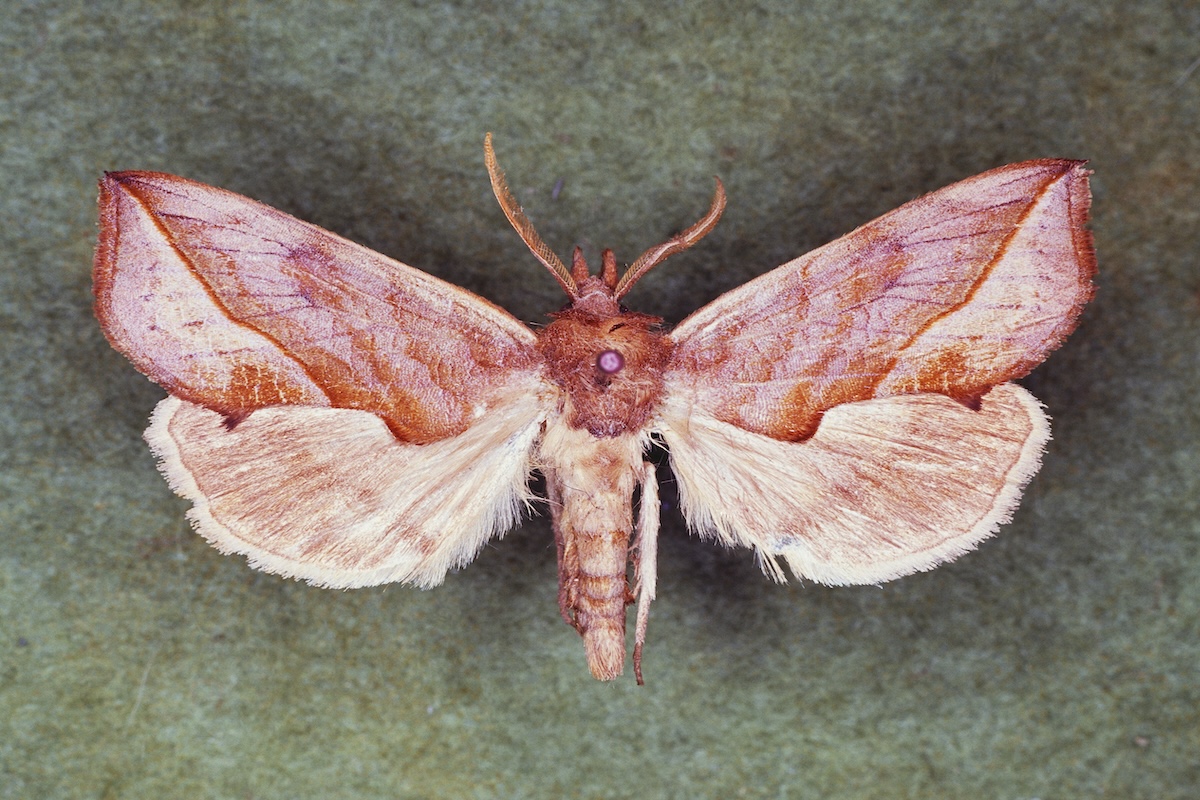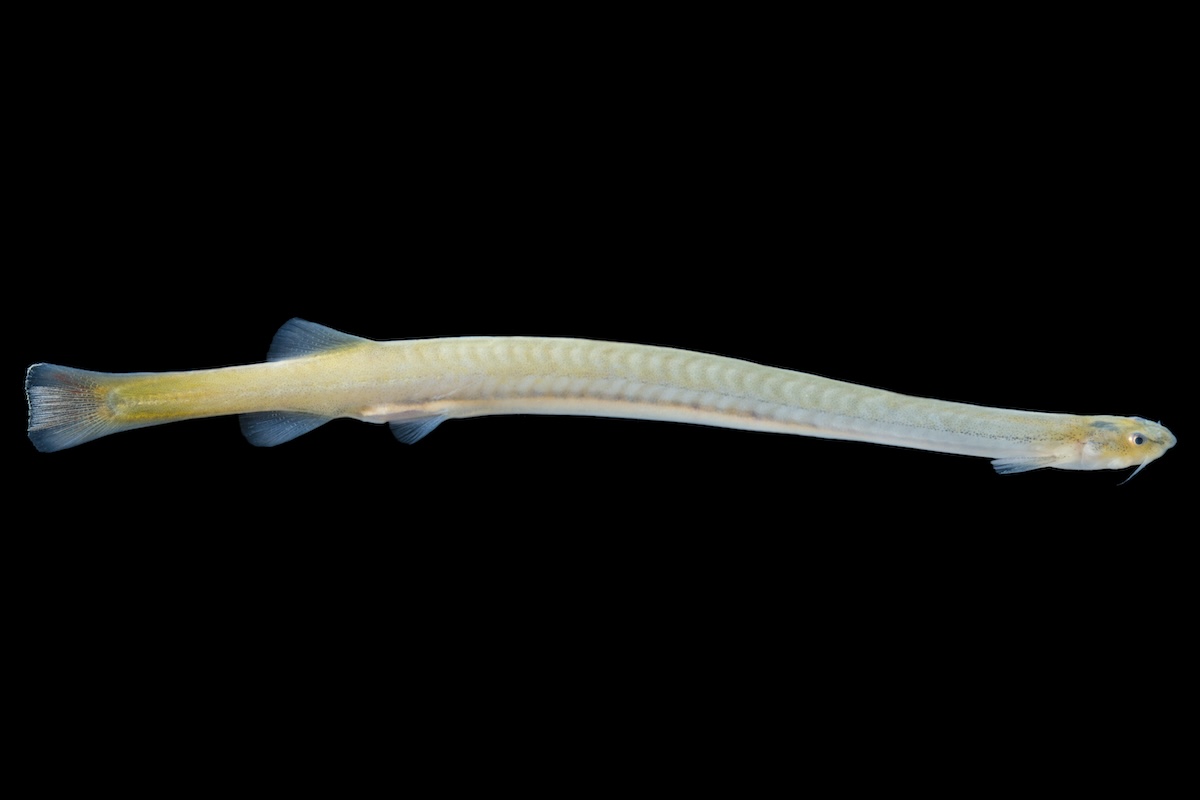In the 2008 film “Twilight,” a vampire describes the scent of blood as being “like a drug.” While in the world of fantasy, vampires may crave blood for reasons that are tinged with the erotic or infused with the demonic (such as in the 1922 movie “Nosferatu”), real life vampires actually exist in nature. Many real-life animals known as hematophages that sustain themselves on blood for a more practical reason — survival.
Some hematophages are well-known: For example, vampire bats in the subfamily Desmodontinae helped inspire the legendary monsters that bear their name and no one can forget blood-sucking mosquitoes and leeches. Many are also familiar with bloodsuckers that don’t target humans, such as lampreys (Petromyzontiformes), which live very deep in lakes and attach themselves to the sides of fishes with their strange, biting mouths.
There are other, more obscure hematophages, signifying that vampiric behavior is something that evolved multiple times for a reason. Take the aptly-named vampire moths (Calyptra thalictri) which slurp blood in part so males can pass the salts onto females during mating. Vampire ground finches (Geospiza difficilis septentrionalis), despite preferring seeds and insects, will resort to feasting on the blood of other birds if conditions are particularly harsh. Meanwhile the leafhopper assassin bug (Zelus renardii) will hunt by impaling their prey on their tubular mouthparts, then sucking their innards out like a milkshake.
 Vampire moth butterfly (Calpe capucina or Calyptra thalictri), Noctuidae. (Photo by DeAgostini/Getty Images)While these creatures are seemingly vastly different from each other, experts on hematophages told Salon that all of these animals are drawn to blood because of their “remarkable similarities” — and it all starts with the mouth.
Vampire moth butterfly (Calpe capucina or Calyptra thalictri), Noctuidae. (Photo by DeAgostini/Getty Images)While these creatures are seemingly vastly different from each other, experts on hematophages told Salon that all of these animals are drawn to blood because of their “remarkable similarities” — and it all starts with the mouth.
Vampire ground finches will resort to feasting on the blood of other birds if conditions are particularly harsh.
“Blood-feeding animals, regardless of lineage, often have specialized mouthparts or other structures to access blood,” Dr. Isabel Ortega Insaurralde, who studies hematophages at the University of Buenos Aires, told Salon. This includes the insect Rhodnius prolixus, which like mosquitoes have piercing-sucking mouthparts that penetrate skin. But despite the seeming simplicity of blood-sucking, it takes a lot to evolve such adaptive behavior.
Not only must successful blood-suckers be able to find a compatible vertebrate, they need to have evolved senses that let them hone in on their targets. Finally, they must possess the ability to force their host to let them finish their meal without getting swatted or becoming a meal themselves.
“You need to be able to keep the blood meal fluid and prevent the host from kicking you out,” Dr. Ben Mans, who studies hematophages at South Africa’s Agricultural Research Council, told Salon. “The vertebrate's natural body defenses against blood loss and invasion include blood clotting, platelet aggregation, vasoconstriction and immune defenses. Most if not all blood feeding parasites secrete a form of saliva into the feeding site that contains many different proteins and even chemicals that target host defenses.”
Want more health and science stories in your inbox? Subscribe to Salon's weekly newsletter Lab Notes.
Because different blood feeding parasites select very different hosts, “it seems as if each functional repertoire evolved by different blood feeding parasites are composed of different protein families or family members that support their independent evolution," Mans said.
Sometimes nature goes to creative lengths, though, when making exceptions in how these animals survive. Take the jumping spider Evarcha culicivora, which does not directly feed on blood.
“Instead, it preys on blood-engorged mosquitoes, indirectly getting a blood meal by eating their prey,” Insaurralde said. The spider has developed a special sense that allows it to detect blood and will choose small, blood-filled mosquitoes over larger ones that don't contain the red stuff.
 An Aedes Aegypti mosquito (Afp/getty Images)There's even a vampire fish: the candiru (Vandellia cirrhosa), also known as the cañero or toothpick fish. It doesn't look like much — just a small, thin and pale little thing, only about 15 centimeters long. But its wormy shape gives it the ability to swim right into the gills of fish, where it drinks its fill of blood. While there are urban legends of the fish swimming up the urethras of some people, this has only been documented once and under controversial circumstances.
An Aedes Aegypti mosquito (Afp/getty Images)There's even a vampire fish: the candiru (Vandellia cirrhosa), also known as the cañero or toothpick fish. It doesn't look like much — just a small, thin and pale little thing, only about 15 centimeters long. But its wormy shape gives it the ability to swim right into the gills of fish, where it drinks its fill of blood. While there are urban legends of the fish swimming up the urethras of some people, this has only been documented once and under controversial circumstances.
While hematophages are fascinating, they also are notorious for spreading diseases. Different species of mosquitoes spread malaria, dengue fever, Zika virus, chikungunya and yellow fever; Triatominae species (kissing bugs) disseminate Chagas Disease; and Phlebotomus and Lutzomyia species (sandflies) contribute to leishmaniasis pandemics. As humans continue to pollute the environment — such as by overly-emitting greenhouse gases into the atmosphere — it only gets worse.
We need your help to stay independent
“With climate change, we’re already seeing how the geographic spread and intensity of these diseases are evolving,” Mans said. “For example, Aedes mosquitoes thrive in warmer climates and urban areas with standing water, which are increasingly common due to climate-driven flooding and inadequate infrastructure. Warmer temperatures speed up the virus replication within mosquitoes, increasing transmission rates and allowing these diseases to spread to new regions.”
Although hematophages can cause humans to get sick, that does not mean they don’t fill valuable niches in nature. After all, parasites like hematophages are the bedrock of the tree of life, outnumbering free living species by about 3 to 2. Without them, webs of life in ecosystems would collapse. The evolution of bloodsuckers, no matter how gorey, is worth studying.
“I like working with blood sucking insects because of their uniqueness and the ick factor, complex interactions with their hosts and their fascinating role in both ecological and human health contexts,” Insaurralde said. Mans also described working with hematophages as “a lot of fun.”
“There are still a lot of discoveries to be made and is therefore a fertile field for young minds,” Mans said. “The breadth of vector research has something for everyone whether you are an entomologist that likes bugs, taxonomy and systematics, ecology, disease epidemiology, protein biochemistry and bioinformatics, genomics or field studies. The more we learn about hemophages, the more we realize how intricate they are. You must admire them for their complexity. Even if they turn out to be living nightmares.”
Read more
about biology


